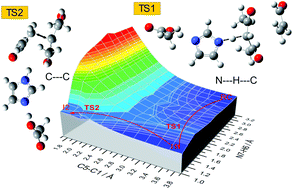Abstract
A theoretical study of the Michael-type addition of 1,3-dicarbonyl compounds to α,β-unsaturated

* Corresponding authors
a Departament de Química Física, Universitat de València, 46100 Burjassot, Spain
b Institute of Applied Radiation Chemistry, Technical University of Lodz, 90-924 Lodz, Poland
c
Departament de Química Física i Analítica, Universitat Jaume I, 12071 Castellón, Spain
E-mail:
moliner@uji.es
Fax: (+34) 964-728066
Tel: (+34) 964-728084
A theoretical study of the Michael-type addition of 1,3-dicarbonyl compounds to α,β-unsaturated

 Please wait while we load your content...
Something went wrong. Try again?
Please wait while we load your content...
Something went wrong. Try again?
K. Świderek, A. Pabis and V. Moliner, Org. Biomol. Chem., 2012, 10, 5598 DOI: 10.1039/C2OB25465D
To request permission to reproduce material from this article, please go to the Copyright Clearance Center request page.
If you are an author contributing to an RSC publication, you do not need to request permission provided correct acknowledgement is given.
If you are the author of this article, you do not need to request permission to reproduce figures and diagrams provided correct acknowledgement is given. If you want to reproduce the whole article in a third-party publication (excluding your thesis/dissertation for which permission is not required) please go to the Copyright Clearance Center request page.
Read more about how to correctly acknowledge RSC content.
 Fetching data from CrossRef.
Fetching data from CrossRef.
This may take some time to load.
Loading related content
